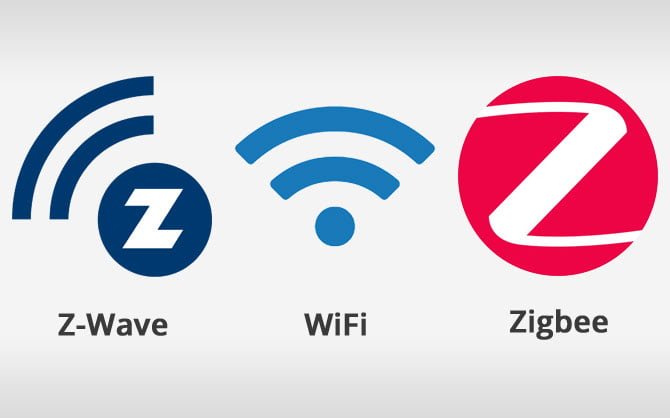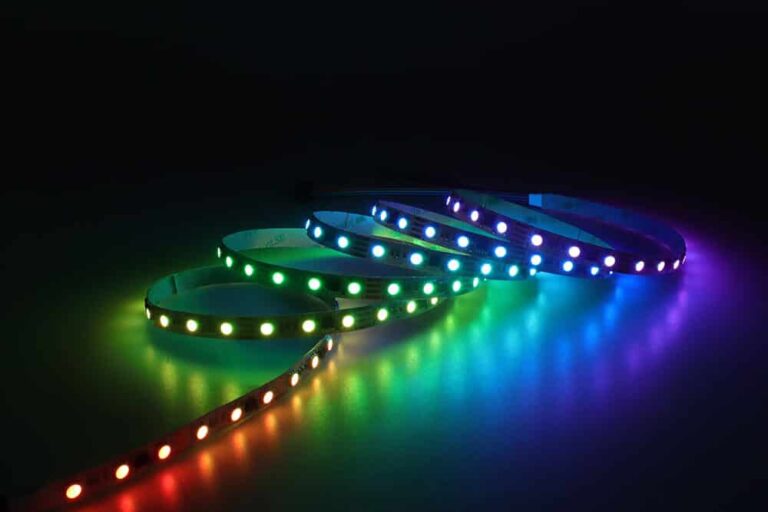Comparing Zigbee, Z-wave, and WiFi: Which is Best?
Table of Contents
What stands at the heart of any intelligent home ecosystem? Is it the sophisticated gadgets or the voice-command aides? Perhaps it’s something more elemental, an essential foundation that knits the entire system into one. You hit the mark! The fluid connectivity intertwines all the devices, facilitating them to operate as a cohesive unit. Hence, selecting an apt connectivity mode is pivotal to the smooth functioning of your smart home system. But which is the supreme choice among Zigbee, Z-Wave, or WiFi?
Delve into this article to unveil the nuances of these three vital contenders in smart home connectivity, assisting you in making an informed choice. Let’s embark on this enlightening voyage together!

Grasping the Fundamentals
What is Zigbee?
Zigbee represents a bespoke wireless technology crafted explicitly for low-rate personal area networks, fostering efficient and economical communication between smart devices.
Utilizing the IEEE 802.15.4 standard as its framework, Zigbee operates at a 2.4 GHz frequency band, a familiar territory with WiFi. Its distinguished attribute is its capability to create mesh networks, allowing each device (node) to interact with its adjacent nodes, thereby paving the way for multiple communication pathways.
What is Z-Wave?
Z-Wave shares its roots with Zigbee as a wireless communication protocol for smart home networks. Initially brought to life by the Danish firm Zensys, it currently resides under the stewardship of Silicon Labs and the Z-Wave Alliance. Like Zigbee, Z-Wave employs mesh networking but operates on a considerably lower frequency— around 908.42 MHz in the US and 868.42 MHz in Europe. This diminished frequency spectrum could lead to diminished interference from other electronic devices.
What is WiFi?
WiFi is a widely used wireless networking technology that provides internet access in homes, offices, and public spaces around the world. WiFi operates mainly on two frequency bands: 2.4 GHz and 5 GHz. It uses a point-to-point network structure, allowing devices to connect directly to a central router for internet access.
Analyzing Key Features
This segment comprehensively compares Zigbee, Z-Wave, and WiFi, focusing on four vital parameters: operational range, data transfer velocity, energy usage, and compatibility/interoperability. A thorough discussion of each technology’s specifics follows the subsequent table.
| Zigbee | Z-Wave | WiFi | |
| Range | 10-100 meters (Mesh network) | 30-100 meters (Mesh network) | 50-100 meters (Limited mesh support) |
| Speed | Up to 250 kbps | 40-100 kbps | 11 Mbps – 1+ Gbps |
| Power Consumption | Very low | Very low | Higher |
| Compatibility | Broad, numerous manufacturers | Broad, interoperability focus | Ubiquitous, potential software issues |
1. Operational Scope
Zigbee’s Operational Distance
Zigbee provides a range of around 10-100 meters, contingent on environmental factors and the device’s power level. Its mesh network capabilities facilitate extending this range over a broader network of devices.
Z-Wave’s Operational Radius
Z-Wave demonstrates a range analogous to Zigbee, generally fluctuating around 30-100 meters. Similar to Zigbee, it can amplify its coverage through its inherent mesh network structure.
WiFi’s Span
The WiFi range usually surpasses, with modern routers covering about 50-100 meters indoors. Nevertheless, lacking intrinsic mesh networking capabilities may curtail its adequate scope in extensive residences.
2. Data Transmission Velocity
Zigbee’s Transmission Pace
Zigbee accommodates data transfer speeds up to 250 kbps, satisfying the requirements for most smart home implementations.
Z-Wave’s Transmission Rate
Z-Wave exhibits slightly lower data speeds, generally within the 40-100 kbps bracket. Despite this, it caters well to most smart home functionalities.
WiFi’s Data Velocity
WiFi, crafted primarily for accelerated internet access, delivers significantly higher data transfer speeds, ranging from 11 Mbps to upwards of 1 Gbps, depending on the precise protocol (802.11b/g/n/ac/ax).
3. Energy Utilization
Zigbee’s Energy Footprint
Zigbee devices are known for their minimal power consumption, making them perfect candidates for battery-driven smart home gadgets.
Z-Wave’s Energy Consumption
Mirroring Zigbee, Z-Wave also champions energy efficiency, thus aligning well with battery-operated apparatuses.
Assessing WiFi’s Energy Efficiency
WiFi-enabled devices are prone to higher power consumption, attributed to their accelerated data transfer rates and a direct connection with the router.
4. Compatibility and Synergies
Zigbee and Device Synergy
Zigbee maintains extensive compatibility, garnering support from many smart home equipment manufacturers.
Z-Wave’s Compatibility Landscape
Z-Wave enjoys a widespread device support network, emphasizing a synergistic approach between diverse manufacturers.
WiFi’s Synergistic Potential
Owing to WiFi’s prevalence, it finds support in many smart devices. Nonetheless, achieving synergy might pose a challenge due to disparate software protocols employed by various manufacturers.
Safety Considerations
- Zigbee’s Security Features: Zigbee implements AES-128 symmetric encryption to safeguard its networks, ensuring a solid degree of security.
- Z-Wave’s Security Measures: Similarly, Z-Wave employs AES-128 encryption but augments safety with additional features, such as the Security 2 (S2) framework, enhancing the overall security landscape.
- Safety Offered by WiFi: The security level of WiFi hinges on the exact protocol (like WPA2 or WPA3) in use; nonetheless, it can offer formidable protection when set up correctly.
Applications and Use Instances
- Common Zigbee Implementations in Smart Homes: Thanks to its minimal power consumption, Zigbee emerges as the preferred option for battery-driven devices such as sensors and intelligent lock systems.
- The Specific Scenarios Where Z-Wave Excels: Z-Wave primarily caters to smart home setups, making it a top choice for various applications, including lighting solutions and security systems.
- WiFi’s Domain of Excellence in Home Automation: WiFi stands out in scenarios demanding high data transfer rates, such as streaming visuals to smart televisions or video-enabled doorbells.
Advantages and Disadvantages
- Assessing the Pros and Cons of Zigbee: Pros: Energy-efficient, supports mesh networking, and accommodates various devices. Cons: Possible interference at the 2.4 GHz frequency.
- Evaluating the Benefits and Downsides of Z-Wave: Pros: Energy-efficient, facilitates mesh networking, minimally affected by interference. Cons: Limited data transfer speed, restricted third-party device compatibility due to less commonly used frequency.
- Understanding WiFi’s Pros and Cons: Pros: Offers high data throughput, supports various devices, and established and standard technology. Cons: Consumes more power and lacks native mesh networking support.
Choosing the Optimal Solution: Zigbee, Z-Wave, or WiFi?
The choice between Zigbee, Z-Wave, and WiFi boils down to individual preferences based on the nature of devices used, home size, and technological adeptness. Weigh the solid points and shortcomings of each to make an informed decision. In the forthcoming period, factors such as the escalating adoption of IoT and the surge in demand for cohesive smart home ecosystems will shape the development and utilization of these technologies.
Conclusion
To sum up, Zigbee, Z-Wave, and WiFi have unique benefits when integrating smart home systems. Grasping the particularities of these technologies is vital in selecting the most suitable solution for your intelligent home setup.
FAQs
The main difference is how they connect and communicate. Zigbee and Z-Wave are low-power mesh networks made for smart home devices, while WiFi offers faster speeds but uses more power and bandwidth.
Zigbee and Z-Wave are better for smart homes. They create strong, reliable mesh networks that are more energy-efficient and less likely to slow down your internet compared to WiFi.
Yes, Zigbee is generally faster. Zigbee operates at higher frequencies and can handle more data at once, although Z-Wave has slightly longer range and better interference resistance.
Yes, WiFi uses more power. Devices connected to WiFi tend to drain batteries faster compared to Zigbee and Z-Wave devices, which are designed for low energy consumption.
Z-Wave has the best range. Z-Wave devices can reach about 100 meters indoors, compared to Zigbee’s 10–20 meters and WiFi’s typical 30 meters indoors.
Not directly, but they can with a hub. A smart home hub like SmartThings or Hubitat can link Zigbee, Z-Wave, and WiFi devices so they work seamlessly together.

Hi, I’m Xylia Xiong, a sales professional with 14 years of experience in the LED strip light industry. I specialize in providing tailored solutions, leveraging my expertise in LED products and the latest industry trends. Known for effective communication and problem-solving, I’m dedicated to helping lighting manufacturers, importers, and distributors achieve their goals.
Let’s work together to create customized solutions that exceed expectations.
Related Posts

The Best LED Strip Lights You Can Buy Right Now

Comparing WS2811 Vs WS2812B: Key Differences


